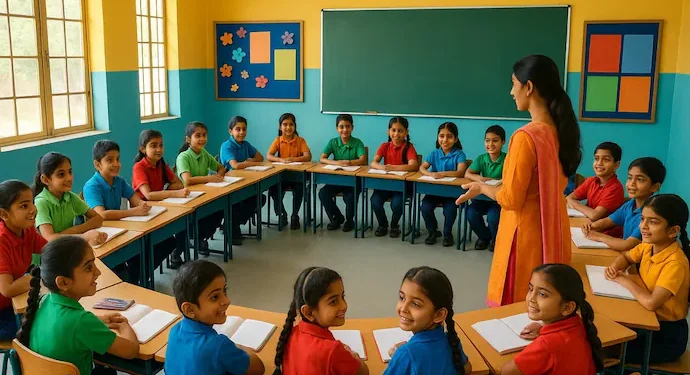For generations, the term “backbencher” has been loaded with meaning—sometimes rebellion, sometimes invisibility, often just a sense of comfort. Many of us remember being told, “Backbenchers, come sit in the front,” a line so frequently repeated in classrooms that, if you earned a rupee for each time you heard it, you might have paid part of your college tuition by now.
But now, change is making its way into Indian classrooms—quietly, yet meaningfully.
Schools in Kerala, Tamil Nadu, West Bengal, and Punjab have begun to do away with traditional row seating altogether. Inspired by a scene from the Malayalam film Sthanarthi Sreekuttan, where a student proposes equal seating to foster inclusion, educators are reimagining the classroom layout. Instead of rows with a clearly defined front and back, some schools are opting for U-shaped or semicircular seating arrangements.
The idea is simple but revolutionary: eliminate the classroom hierarchy created by seating positions. Traditionally, students sitting in front were perceived as more attentive, while those at the back were often seen as distracted or disengaged. But seating arrangements shouldn’t determine access to attention or learning.
This change is about more than just furniture. It’s about equity. When every student is equally visible, they feel equally valued. A semicircular or U-shaped layout encourages more interaction between students and teachers, promotes group participation, and breaks down barriers—literal and figurative.
Backbenches, long a refuge for the shy, the tired, or the class clowns, may soon be a thing of the past. And while some might mourn the loss of that quiet corner in the classroom where inside jokes and doodles thrived, the shift points to something larger: a growing awareness that inclusivity in education extends to how we design learning spaces.
Teachers, too, are beginning to appreciate the benefits. Eye contact becomes easier, discussions feel more democratic, and classroom dynamics shift toward collaboration rather than control.
As Indian education continues to evolve, this seemingly small change in classroom seating could have a lasting impact. Because when everyone has a front-row seat, everyone has a better chance to learn—and to be heard.












